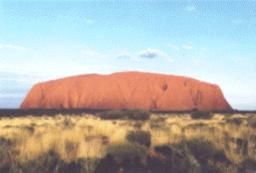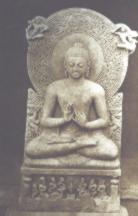Pyramids In The Pacific

The Unwritten History Of Australia
Chapter 5
|
Sons of fire and Dwellers of darkness. Indians explore the Pacific. |
"Sons of the Sea, mighty to save
discoverers of riches, ye Gods with deep
thought who find out wealth"
Hymn 136, 10th book of the Rig Veda.
|
Chapter
5 Images
|

|
Ayres Rock / Uluru Photographed
by Rex Gilroy
After Uru and Sumer, India became the home of one of the world's most ancient civilisations, with a written history which scholars date back 4,000 years. As previously discussed India's earliest known civilised society began in the Valley of the Indus River, which lies between Pakistan and north-west India. Now largely arid, in Antiquity it was a jungle and marsh covered region.
Migrating dark-skinned people from the mountainous area of Iran, who had contact with the people of Mesopotamia, entered the region around 4000 BC to establish farming communities which grew into cities. The Indus Valley people made mud bricks with which they constructed better dwellings that resisted the yearly floods. They also developed many other skills in soil cultivation, tanning leather, garment weaving and the manufacturing of pottery and furniture.
By 2000 BC their cities had grown around the coast of the Arabian Sea, extending from the Iranian border eastwards and southwards to the region of modern Bombay, and in a broad area stretching far northwards across the flood plain of the Indus Valley.The people of the Indus civilisation developed well-organised governments and a form of picture writing {yet to be deciphered}.
Their civilisations possessed many Mesopotamia features with an organised religion. They manufactured copper tools and shared the wheeled cart with Mesopotamia, and made Jewellery equal to any elsewhere at the time. These people and their culture are identified as the Harappan Civilisation, 100 sites are known to archaeologists, two of these were large cities--Harappa and Mohenjo-Daro. Several other sites were large towns, and the rest were small villages. It is estimated that Harappa and Mohenjo-Daro each supported populations of up to 40,000 people with a busy commercial life. Many materials had to be imported, particularly metals.
There nearest source of silver, lead and gold came from Afghanistan, where they also obtained lapis lazuli. Here they also obtained copper, as well as from Rajasthan not far from the Indus Valley. They obtained Jadeite from northern Burma and Tibet, and from Iran {via northern India} and further west, turquoise and tin. They produced bronze tools and weapons and traded with Mesopotamia, especially Ur. Their large single-sailed wooden ships ventured farther afield than often claimed, for there is evidence that Indus crews reached remote lands beyond the Indian Ocean.
Comparisons have been drawn between the Indus and the mysterious script of Easter Island and other similar inscriptions found upon rocks in Brazil and Australia. Thier ships returned home with copper, ivory and wood from Oman on the Persian Gulf. But Indus crews must have reached Ceylon {Sri Lanka} and other south-east Asian islands on their way into the Pacific Ocean {as suggested by the Australian rock inscriptions} and vessels sailing between the Indus and south-east Asian ports, might have occasionally been blown off course to find our shores, as were Phoenicians, Egyptians and others throughout the ages.
As the name 'Uru' was known throughout the Indian sub-continent and Mesopotamia, the Harappans must already have had knowledge of Australia. The Harappans were worshippers of a horned fertility god that resembled Shiva, one of the most prominent of all Hindu deities, figurines of the gods and goddesses recovered from their ancient settlements show close similarities with those of Hindu deities today; thus the Harappans had an influence upon the Hindu religion.
|
Pyramids
in the Pacific Images Ch 5
|

|
Siddhartha